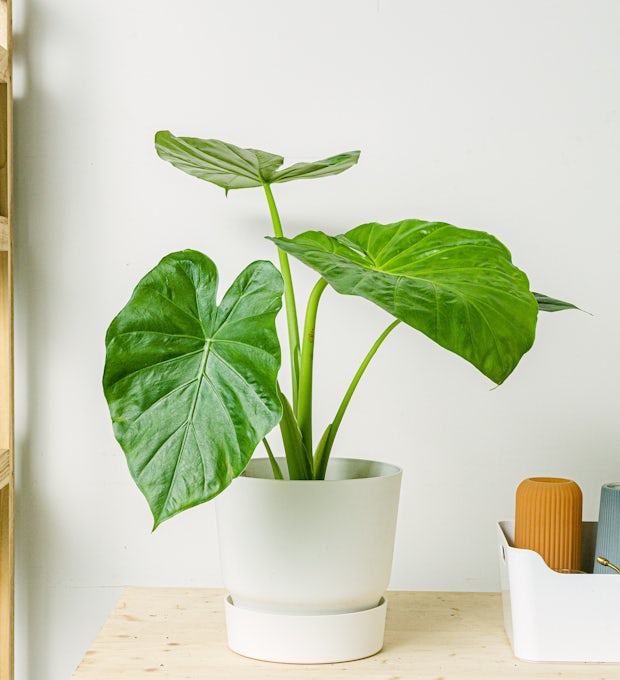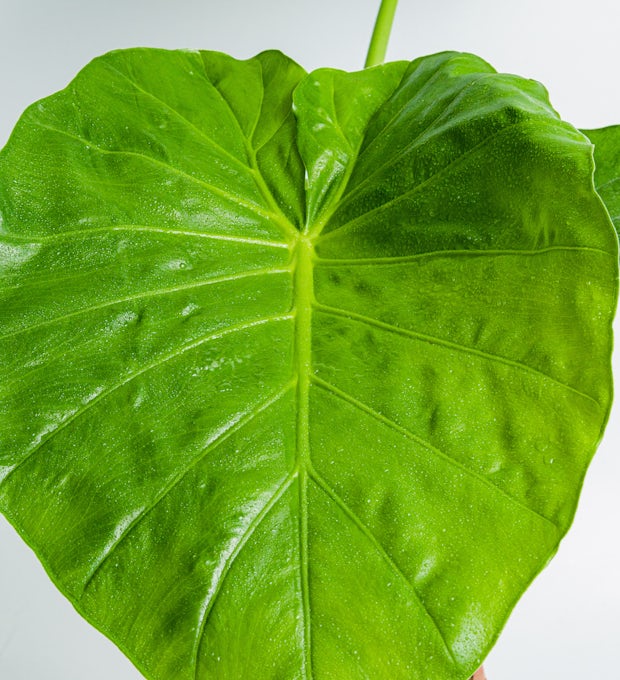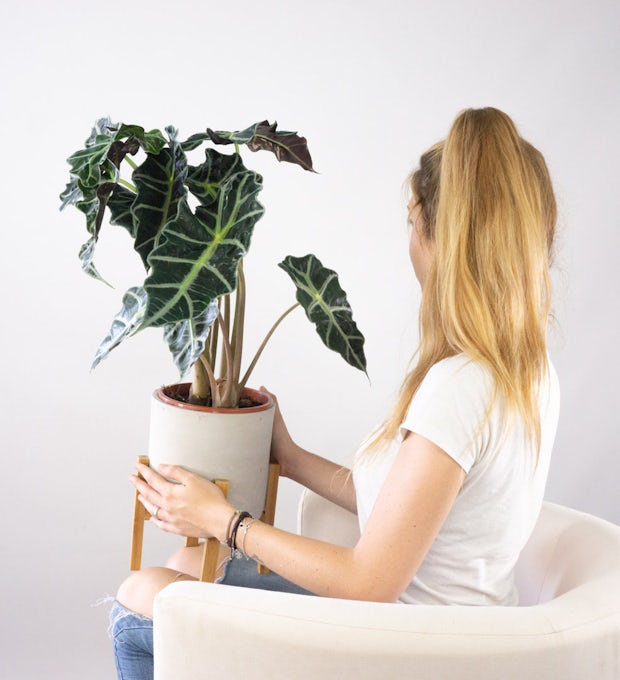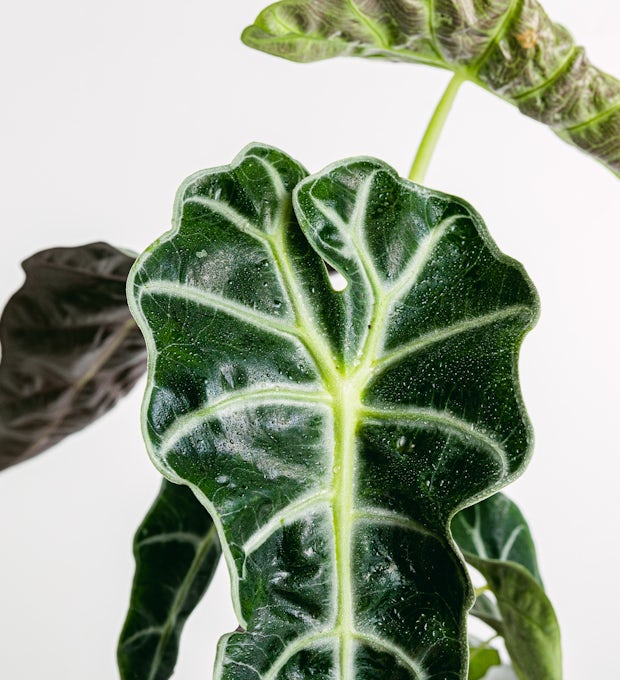Looking to add some exotic vibes to your indoor oasis? Well, let me introduce you to the African Mask Plant, also known as Alocasia.
With its lush green leaves and striking veins, this beauty is sure to steal the show in any space.
In my article, African Mask Plant: The Secrets to Thriving, Ill spill all the tea on how to care for this unique plant.
Get ready to unlock the secrets to successfully cultivating and nurturing this stunning plant. Lets dive in!
The African mask plant, also known as Alocasia, is gaining popularity for its large, uniquely shaped leaves and easy care requirements. This tropical plant is not only a statement piece indoors, but also has many uses outside in the garden. Here we will explore the most popular ways people are utilizing the African mask plant’s versatility and hardiness.
As a Striking Houseplant
One of the main reasons the African mask plant has surged in popularity is its ability to liven up indoor spaces Its leaves grow over a foot long in mature plants and have a distinct shape that resembles an upright elephant’s ear. The prominent veins against the shiny green leaves create a textured, sculptural look.
When grown in optimal conditions indoors which includes bright indirect light and high humidity, the African mask plant can produce new large leaves weekly during peak growing periods. Caring for an African mask houseplant includes locating it in bright rooms, watering when the top inch of soil is dry, misting for humidity, and providing temperatures above 70°F. With the right home environment, this plant will thrive for years.
In Home Decor and Design
Another popular use for African mask plants is incorporating them into home decor. Their unique leaf shape and veins lend visual interest to any space. The leaves come in green varieties, as well as variegated cultivars with white, silver, or yellow accents. Their colors and textures can accent cabinets, tables, shelves, or any blank space needing a pop of greenery.
Interior designers also utilize these statement plants in living rooms, bedrooms, and bathrooms when they want to add an exotic, tropical feel. The African mask’s shiny, sculptural look suits both bohemian styled spaces, as well as modern, minimalist rooms. Their ability to liven up both small and large rooms make them a versatile design choice.
As Stunning Focal Points in Gardens
Not only do African mask plants shine indoors, but they also make eye-catching focal points in outdoor garden beds and patio containers during warm months. Their vibrant green colors and uniquely shaped leaves stand out against other plants.
When using them in garden beds, plant African mask plants in part sun areas and provide consistent moisture. Add compost to soil to help retain moisture. Their height and structure contrast nicely against shorter, mounding plants like lantana and dipladenia.
For patio and deck areas, plant African masks in large containers alone or with complementary plants like herbs and trailing vines. Let them soak up rainwater when possible, and water at the base to keep their leaf tops dry. Fertilize every 2-3 weeks. Their beautiful leaves will be vibrant focal points for entertaining spaces.
As Striking Backdrops in Water Features
The African mask plant’s exotic look has made it a popular backdrop plant for water features and pond gardens. Their height allows their leaves to rise above and stand out around ponds and fountains. They also help filter water in natural pools and wetlands.
Provide them the same consistent moisture as in garden beds by planting in amended soil and utilizing drip irrigation. The humidity from ponds and fountains will also create optimal growing conditions. Keep them situated in part sun areas so their leaves are not scorched. Variegated varieties look especially striking reflected in water.
For Added Texture and Height in Mixed Planters
Another fantastic use for African mask plants is incorporating them into large mixed planters, either on patios or indoors. Choose containers at least 12-14 inches wide to allow their root systems ample room. Use the African mask as a thriller plant among lower growing fillers and spillers.
Some classic combinations include using the African mask with ivy and scented herbs like basil and mint. The eye-catching leaves pair nicely with trailing flowers like petunias or verbena. Let the African mask’s height and interest shine by keeping the other plants low and mounding.
As Statement Indoor Trees
For those wanting the look of a small indoor tree, the African mask plant fits the bill. When provided optimal indoor conditions, they can grow 5-6 feet tall at maturity. Their bare stems will eventually form a tree-like trunk.
Pruning is key to achieving a tree shape. Allow the main stem to grow, pruning lower leaves and allowing 1-2 leaves at the top. As it ages, a few side shoots can be allowed to form a branch shape. Staking while young will ensure it grows upright.
The African mask’s large, cascading leaves will lend the look of a tropical tree in any home. Place plant shine on leaves to play up this bold tree look.
For Dramatic Entryways and Hallways
Another fantastic use for the African mask plant is placing it in entryways, hallways, or any high-traffic area in a home. Its huge leaves and tropical look make a bold first impression. The plant’s height and structure also allow it to stand out despite confined spacing.
Use the African mask solo as a standalone accent, or pair with other tall, structural plants like fiddle leaf figs and yucca. For filler, add lower houseplants like ferns and pilea. The African mask’s eye-catching leaves will greet guests in style.
As Striking Party Centerpieces
Party hosts have also discovered the African mask plant’s versatility by using them as living centerpieces. Their bold, sculptural leaves pair nicely with flowers and decor on tables.
For outdoor summer parties, use large African mask plants as focal points down the center of long tables. Surround with citronella candles in glass votives to help deter mosquitoes. The visual impact pairs perfectly with string lights overhead.
For indoor events, use them as centerpieces surrounded by seasonal flowers and candles. Complement with table runners, charger plates, and simple flatware. Let the plants stand out against this clean backdrop.
In Unique Outdoor Living Spaces
Homeowners are also getting creative with utilizing African mask plants in unique outdoor living spaces like covered patios, pergolas, and poolside areas. Their tropical appeal helps set the mood in lounging and entertaining spaces.
Under covered areas, use large African mask plants in decorative ceramic or metal planters to jazz up vacant corners and walls. Near pools, place them in bright pots atop glass tables and bars. Their bold leaves will add drama without taking up valuable floor space.
Balancing Open Floor Plans
Homes with open concept floor plans have also found a great use for African mask plants – using their height and structure to help define and separate spaces. They essentially create living walls that divide areas like kitchens, dining rooms, and sitting spaces.
Place several in a row down the center of the open area, using their leaves like architectural columns. For wider spaces, flank each side with these plants. They will help delineate specific functional zones while still allowing an open line of sight.
Adding Style to Home Offices
Another trendy use for the African mask plant is dressing up home offices and workspaces. Their eye-catching leaves bring life to desks, bookshelves, and computer workstations.
Place small specimens in colorful ceramic planters alongside desk accessories and framed photos. Larger floor plants can sit in a corner to warm up minimalist office spaces. Their exotic vibe will make workdays feel more like a tropical vacation!
Imparting Luxury in Bathrooms
Finally, a popular decorative purpose for African mask plants is using their tropical style to impart luxury and relaxation in bathrooms. Their bold foliage pairs nicely with textured towels, marble counters, and wooden accents.
Place small varieties on open shelves and window sills. Use larger plants in woven floor baskets to create an exotic spa feel. Keep them out of direct steam and watering from showers. Let their vibrant leaves enhance this soothing oasis.
The African mask plant clearly offers versatility far beyond just being a houseplant. Their unique leaves and tropical vibe allow them to enhance indoor and outdoor spaces in many creative ways. They offer easy care coupled with dramatic visual impact. Next time you need a striking plant, consider this jungle gem.

African Mask Plant Care
When caring for the African Mask Plant, its important to provide the right conditions and maintenance to ensure its optimal growth and health. Here are three key aspects to consider:




- Watering schedule: The African Mask Plant prefers to be kept consistently moist, but not soggy. In warmer months, water the plant every six to seven days, and adjust the frequency during its semi-dormant phase in fall or winter. Factors like pot size, soil type, location, and home environment can affect the watering needs, so its important to monitor the moisture level of the soil.
- Humidity requirements: Moderate to high humidity is crucial for the African Mask Plant. While the average houseplant enjoys around 50% humidity, this plant may suffer in areas with low humidity, like Tucson where it can be as low as 12%. Increase humidity by using saucers with water, misting the plant, using humidifiers, or using a humidity meter. Avoid letting the roots sit in water to prevent root rot.
- Soil mix: The African Mask Plant thrives in a well-draining soil mix. A recommended recipe is a combination of 1/3 coco chips, 1/3 pumice (perlite is fine too), and 1/3 potting soil. Adding charcoal can improve drainage, and incorporating organic compost when planting provides additional nutrients. Top dressing with worm compost and compost can also be beneficial.
African Mask Plant Traits
As a plant enthusiast, Ive come to appreciate the unique traits of the African Mask Plant. Native to the tropical rainforests of Southeast Asia, this plant thrives in its natural habitat of warm, humid environments.
With its striking growth patterns, the African Mask Plant can grow tall and spread out, becoming a low, wide floor plant. Alocasia Polly, a popular variety of the African Mask Plant, reaches a maximum size of 2 x 2 feet, while other Alocasias can grow as tall as 4-6 feet. These plants have a moderate growth rate, especially during the spring and summer months.
The deep green leaves with pronounced veins are a distinguishing feature of this plant, adding to its overall appeal.
How to Take Care of Your African Mask Plant
FAQ
What were most African masks used for?
Where should I put my African mask plant?
What are some fun facts about Alocasia?
